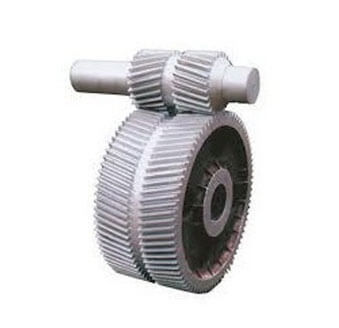 Herringbone gears, which are also referred to as double helical gears, are a unique sort of gear system. It has been used in a variety of industrial applications for decades. These gears differentiate them in the market because of their V-shaped teeth, which aid in effective power transfer while alleviating noise as well as vibration. These are employed in a wide range of sectors, including heavy machinery as well as precise instruments. Here, we will go into depth about the applications of herringbone gear and also discuss how these gears improve industrial efficiency as well as dependability.
Herringbone gears, which are also referred to as double helical gears, are a unique sort of gear system. It has been used in a variety of industrial applications for decades. These gears differentiate them in the market because of their V-shaped teeth, which aid in effective power transfer while alleviating noise as well as vibration. These are employed in a wide range of sectors, including heavy machinery as well as precise instruments. Here, we will go into depth about the applications of herringbone gear and also discuss how these gears improve industrial efficiency as well as dependability.Before proceeding, let us have a little insight into helical gears.
What are Herringbone Gears?
Herringbone gears are made up of two helical gears positioned side by side with opposing helix angles. This configuration balances out the axial thrust generated by helical gears and eventually makes them more stable as well as efficient at transmitting power. Furthermore, the V-shaped teeth mesh flawlessly, resulting in smooth functioning. It is vital to note that this design not only improves performance but also decreases wear and tear, thus leading to a longer service life.Key Features and Benefits
Axial Thrust Cancellation: The most notable feature of herringbone gears is their ability to cancel axial thrust. Actually, the opposing helix angles balance the forces exerted on the gear shaft. This ultimately results in smoother and more stable operations.
Reduced Noise and Vibration: The other amazing thing about this gear is low noise. Continuous contact of teeth in herringbone gears results in less noise and vibration. This feature eventually makes them excellent for applications that need pretty quiet and steady operation.
High Load Capacity: It is important to note that Herringbone gears have a larger load capacity than spur as well as single helical gears. This makes them ideal for applications with heavy usage that require good strength.
Durability: The uniform distribution of stress between the teeth lowers wear and tear and thereby increases the life of the gear system.
Industrial Applications of Herringbone Gears
Heavy Machinery: One of the most common applications for herringbone gears is heavy equipment. These gears are utilized in machinery such as cranes, excavators, as well as conveyors that need high torque and weight capacity. Herringbone gears are ideal for such tough situations because of their high strength.
Power Generation: In power stations, herringbone gears are imperative for the functioning of turbines as well as generators. Their capacity to manage huge loads and offer seamless power transmission guarantees that energy is generated consistently.
Marine Industry: You might not know that the nautical sector depends a lot on herringbone gears for propulsion. But it is true. Ships, as well as submarines, utilize these gears to transmit power from the engine to the propeller. The reduction of noise as well as vibration is critical in underwater applications where stealth operations are often needed.
Automotive Industry: Herringbone gears, although not as popular as other forms of gear in automobiles, are utilized in outstanding performance automotive applications. They may be found in transmission systems that emphasize durability and high load capacity.
Manufacturing Equipment: Herringbone gears are often employed in industrial equipment such as lathes, milling machines, as well as presses. These gears aid in creating accurate and steady movement, which is critical for making high-quality goods.
Oil and Gas Industry: Drilling rigs and pumping equipment in the oil as well as gas sector include herringbone gears. These gears are capable of withstanding the extreme environment and huge weights encountered in these applications. Their dependability provides consistent functioning, which is crucial in this industry.





